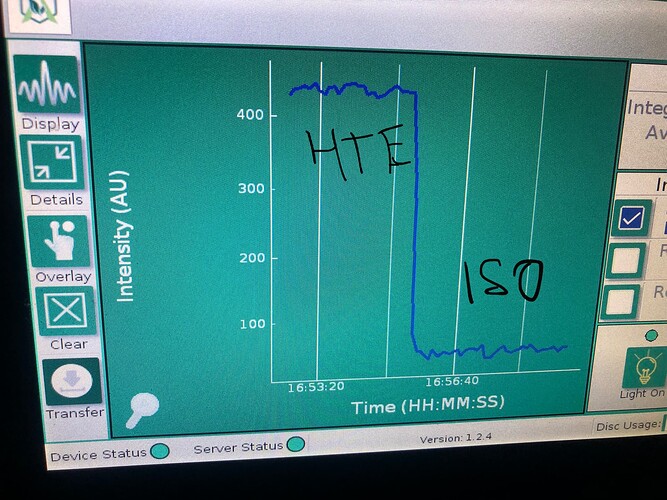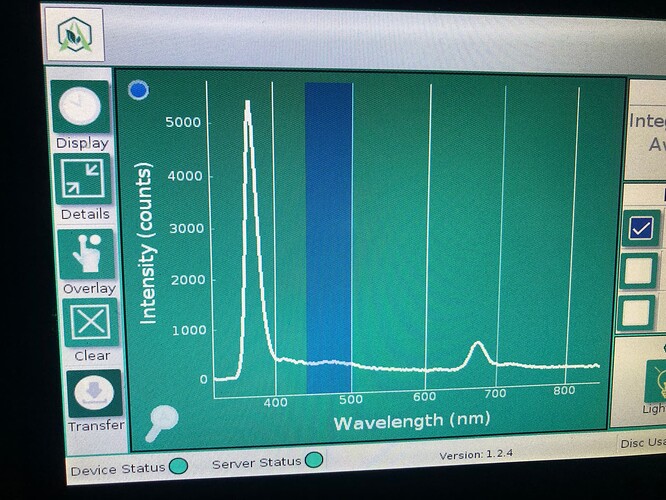Our technology isn’t always the answer. Our product is constantly improving and evolving based on new research and data from our customers and partners. We are a small startup that started with the observation that something inside the distillate fluoresces and that this can be really helpful in cannabis processing. We did the first fluorescent cannabis research since the 70s and published it. We progressed, doing additional research and noting that specific isolated cannabinoids do indeed fluoresce. And there is a ton more that we have to learn. The reality is that it doesn’t matter if individual cannabinoids fluoresce for molecular monitoring to be useful. We are not an analytical device like an HPLC, we are a process monitoring and control device. What is important is that the technology can detect meaningful process indicators that can enable the operator to improve outcomes. We’ve shown this over and over again on short path distillation systems, and are continuing to investigate additional applications, including wiped film and butane extraction. We’ve helped operators see oddities, reduce processing times, and improve their results.
What fluoresces? Generally simple molecules don’t, and many complex molecules do. For example, Butane doesn’t but D9 does. In short the principle of fluorescence has to do with double bonds, their conjugation, as well as aromatic rings. There are many nuances to fluorescence. This nuance often makes it difficult to study. We’ve noted that most terpenes don’t seem to, but we haven’t done enough research to rule out anything. For example, tonic water containing the alkaloid Quinine does fluoresce - and it’s actually the demonstration we do at tradeshows to exhibit fluorescence.
There are a lot of solutions that look at color and pigments to make determination. I am sure color has its place in process improvement, but that is not something Arometrix focuses much effort on. However, one of the molecules that we see fluorometrically is chlorophyll, which itself is a pigment. Many of our customers find tracking chlorophyll as a process indicator can be very useful. We have had the ability to look at in process hydrocarbon extraction both Pre-CRC and Post CRC which can give interesting and meaningful information - We look forward to innovation from other companies in that space looking to go deeper.
While many complex molecules can fluoresce at the same wavelength, in a specific use case that may not matter. Let’s say if cow dung fluoresces at the same wavelength as D9: that would mean that you couldn’t tell them apart. However, if you are working at the point of purification where someone might use Arometrix technology to understand potency trends, I hope we are passed making sure cow dung is removed from your product  In its current form, the Fraction finder can’t differentiate CBD and THC because of how similar the fluorescent response is based on field experience and on the chemical standards we purchased from a supply house. This may make it less useful for Chromatography, or require a more creative SOP to use molecular monitoring for that process. Some of our customers have figured that out. And to be clear, we have done very little work with isolated compounds, so we can’t really speak to the tech’s usefulness there.
In its current form, the Fraction finder can’t differentiate CBD and THC because of how similar the fluorescent response is based on field experience and on the chemical standards we purchased from a supply house. This may make it less useful for Chromatography, or require a more creative SOP to use molecular monitoring for that process. Some of our customers have figured that out. And to be clear, we have done very little work with isolated compounds, so we can’t really speak to the tech’s usefulness there.
In a post not too long ago, one of our early adopters in the ethanol space did a bunch of tests and posted about how his extraction finder didn’t see anything. After his post, we worked with him and discovered his 2 year old first generation extraction adapter developed an issue and in fact, was broken - it didn’t see anything. In the last week the issue has been resolved, and I am sure his new system will perform as designed. If you have an Fraction Finder or an Extraction Finder that isn’t giving you what you want, please contact us. Or you can post here and we can contact you after your post. There are some subtleties that make the technology work a bunch better, and sometimes things break. We can help in both situations. In most cases we can help companies get started and optimize their results from fluorescence.
I think we can do a lot more with lemonade than with lemons. I think building each other up and working together to scientifically address issues can get the community a lot further in growing this industry to achieve our mutual goal of helping more patients. If we as a group cry foul in pursuit of self promotion or otherwise, then we lose the power of each other. I feel this forum, when used in the information sharing way Dustin intended, is hugely beneficial. I know we would be nowhere without our customers guiding us to improve and be better, and a lot of those conversations happen on this forum, and for all that communication we are grateful.
![]()


